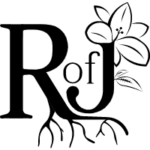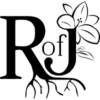How to make bio-enzyme and other natural zero waste cleaning products

The three best natural cleaning agents are bio enzyme, white vinegar and baking soda. The last two are also responsible for the most common cleaning myth, which is that when they are mixed together, they clean better. If we mix white vinegar and baking soda, we will actually get salt and water, but because of the strong reaction (bubbles), we get the impression that something abrasive is happening and hence a better cleaning. The answer is to utilize them separately. A mixture of water and vinegar may be used to clean everything from surfaces to windows on a regular basis, while baking soda can be used for scrubbing heavier stains.
White vinegar dilution
Recipe
Water: 250 ml / 8.45 oz
White vinegar: 250 ml / 8.45 oz
Steps
Fill the spray bottle halfway with water and halfway with alcohol vinegar.
Baking soda
Steps
Make a paste using baking soda and a little water, and apply it to the surface you need to clean and scrub with a cloth. For tougher stains, after scrubbing leave it for 15 minutes before wiping it down. For the bottom of the toilet, allow the baking soda to sit in the bowl overnight.
What to clean with vinegar and what with baking soda?
Both baking soda and vinegar can be used to clean the same goods. As previously stated, I like to clean with diluted white vinegar every day, but when I need to scrub anything or remove a stain, I use baking soda.
• Kitchen: microwaves, ovens, fridge, stoves, countertops, tiles, kitchen sink and clogged drain, silverware, stained mugs from coffee and tea, pots and pans
• Bathrooms: toilets, toilet brushes, showers, bathtubs, bathroom sinks, tiles
• Carpets
• Curtains
• Children toys
• Footwear
What is the difference between baking soda and washing soda?
Although they sound similar, are both environment-friendly household cleaning products, and it is even possible to get washing soda from baking soda (by heating the baking soda in the oven for two hours at 200Celsius / 400 Fahrenheit), they are not the same. The main difference to remember is that washing soda works better as a laundry booster, water softener, and stain remover for textiles, whereas baking soda cleans hard surfaces, tiles, stainless steel, and glass. Apart from its cleaning properties, baking soda can also be used as a leavening agent in the food, in dental hygiene and on skin, whereas washing soda cannot.
How to make a bio-enzyme?

Bio-enzyme is an organic solution formed by fermentation of fruits and vegetables remains, such as peels and seeds, along with sugar and water. Their ratio is 10 : 3 : 1, which means that for every 10 parts of distilled water we add 3 parts of fruit and vegetable remains, and 1 part of sugar.
Recipe
Scraps from fruits and vegetables: 900 g / 2 pounds
Brown sugar 300 g / 10,5 oz
Distilled water: 3 liters / 100 oz
Steps
Step 1. Take a 5-liter plastic bottle (I reuse the one in which was white vinegar or distilled water)
Step 2. Add water and sugar and shake the bottle
Step 3. Add the scraps from fruits and vegetables and shake it all again
Step 4. Leave it for three months in dark and cold place
Step 5. In the first week, open the bottle every day to release the gases from fermentation and shake it
Step 6. After three months, strain the liquid through the sieve in the carboy
Step 7. Dilute the bio enzyme with water and put in spraying bottle for cleaning purposes
Notes
Note 1. Use brown sugar because it has more minerals than white one
Note 2. Use plastic bottles instead of glass because gases can cause glass breaking
Note 3. If you see the worms, add 100g more sugar and close the lid tightly
Note 4. If you want a better smell, use more fruits than vegetables, especially citrus.
Note 5. After straining, use the leftover scraps in the garden if you have, if not, carry it to nature because it is good fertilizer.
How to use bio-enzyme?
1. A bio enzyme diluted in ratio 100 ml / 3.4 oz with 1 liter/ 33 oz of water, is a versatile cleanser that may be used to clean your:
- Floors
- Windows
- Kitchen and bathroom surfaces
- Tiles
- Dishes
- Laundry
- Drain cleaning
- Limescale
- Mold
- Furniture
- Pets
2. It is great for watering your plants or garden: mix 30 ml/ 4 oz of bio-enzyme with 2l / 0.5 gallon of water and spray (do not use bio-enzyme alone because it is too strong)
3. It is successful with garden parasites: mix 15 ml/ 0.5 oz of bio-enzyme with 500 ml / 19 oz of water and spray
4. It works well as a natural shampoo
5. Purifies the air and removes unpleasant odors
What cloth to use for cleaning?

The best zero waste option is to reuse an old towel or t-shirt. The second-best option is to ask a friend or a member of the zero-waste group if they have any towels or t-shirts to spare. If you must purchase it, go with natural fabrics such as organic cotton or bamboo. If at all possible, avoid using microfiber cloths for cleaning because they are made of synthetic fibers that are released into our water system and, as a result, into the environment, affecting our living animals.
In addition to the cloth, I recommend having a wooden cleaning scrubbing brush made of natural fibers for cases where the cloth is too weak.

